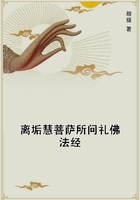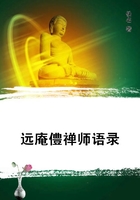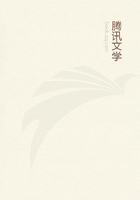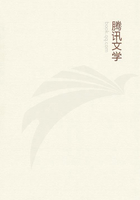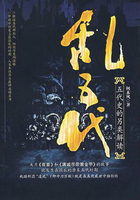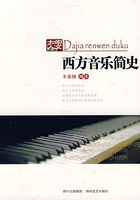Therefore when a thing moves itself it is one part of it that is the movent and another part that is moved. But it is not self-moving in the sense that each of the two parts is moved by the other part: the following considerations make this evident. In the first place, if each of the two parts is to move the other, there will be no first movent. If a thing is moved by a series of movents, that which is earlier in the series is more the cause of its being moved than that which comes next, and will be more truly the movent: for we found that there are two kinds of movent, that which is itself moved by something else and that which derives its motion from itself: and that which is further from the thing that is moved is nearer to the principle of motion than that which is intermediate. In the second place, there is no necessity for the movent part to be moved by anything but itself: so it can only be accidentally that the other part moves it in return. I take then the possible case of its not moving it: then there will be a part that is moved and a part that is an unmoved movent. In the third place, there is no necessity for the movent to be moved in return: on the contrary the necessity that there should always be motion makes it necessary that there should be some movent that is either unmoved or moved by itself. In the fourth place we should then have a thing undergoing the same motion that it is causing-that which is producing heat, therefore, being heated. But as a matter of fact that which primarily moves itself cannot contain either a single part that moves itself or a number of parts each of which moves itself. For, if the whole is moved by itself, it must be moved either by some part of itself or as a whole by itself as a whole. If, then, it is moved in virtue of some part of it being moved by that part itself, it is this part that will be the primary self-movent, since, if this part is separated from the whole, the part will still move itself, but the whole will do so no longer. If on the other hand the whole is moved by itself as a whole, it must be accidentally that the parts move themselves: and therefore, their self-motion not being necessary, we may take the case of their not being moved by themselves. Therefore in the whole of the thing we may distinguish that which imparts motion without itself being moved and that which is moved: for only in this way is it possible for a thing to be self-moved. Further, if the whole moves itself we may distinguish in it that which imparts the motion and that which is moved: so while we say that AB is moved by itself, we may also say that it is moved by A. And since that which imparts motion may be either a thing that is moved by something else or a thing that is unmoved, and that which is moved may be either a thing that imparts motion to something else or a thing that does not, that which moves itself must be composed of something that is unmoved but imparts motion and also of something that is moved but does not necessarily impart motion but may or may not do so. Thus let A be something that imparts motion but is unmoved, B something that is moved by A and moves G, G something that is moved by B but moves nothing (granted that we eventually arrive at G we may take it that there is only one intermediate term, though there may be more). Then the whole ABG moves itself. But if I take away G, AB will move itself, A imparting motion and B being moved, whereas G will not move itself or in fact be moved at all. Nor again will BG move itself apart from A: for B imparts motion only through being moved by something else, not through being moved by any part of itself. So only AB moves itself. That which moves itself, therefore, must comprise something that imparts motion but is unmoved and something that is moved but does not necessarily move anything else: and each of these two things, or at any rate one of them, must be in contact with the other. If, then, that which imparts motion is a continuous substance-that which is moved must of course be so-it is clear that it is not through some part of the whole being of such a nature as to be capable of moving itself that the whole moves itself: it moves itself as a whole, both being moved and imparting motion through containing a part that imparts motion and a part that is moved. It does not impart motion as a whole nor is it moved as a whole: it is A alone that imparts motion and B alone that is moved. It is not true, further, that G is moved by A, which is impossible.
Here a difficulty arises: if something is taken away from A (supposing that that which imparts motion but is unmoved is a continuous substance), or from B the part that is moved, will the remainder of A continue to impart motion or the remainder of B continue to be moved? If so, it will not be AB primarily that is moved by itself, since, when something is taken away from AB, the remainder of AB will still continue to move itself. Perhaps we may state the case thus: there is nothing to prevent each of the two parts, or at any rate one of them, that which is moved, being divisible though actually undivided, so that if it is divided it will not continue in the possession of the same capacity: and so there is nothing to prevent self-motion residing primarily in things that are potentially divisible.
From what has been said, then, it is evident that that which primarily imparts motion is unmoved: for, whether the series is closed at once by that which is in motion but moved by something else deriving its motion directly from the first unmoved, or whether the motion is derived from what is in motion but moves itself and stops its own motion, on both suppositions we have the result that in all cases of things being in motion that which primarily imparts motion is unmoved.

